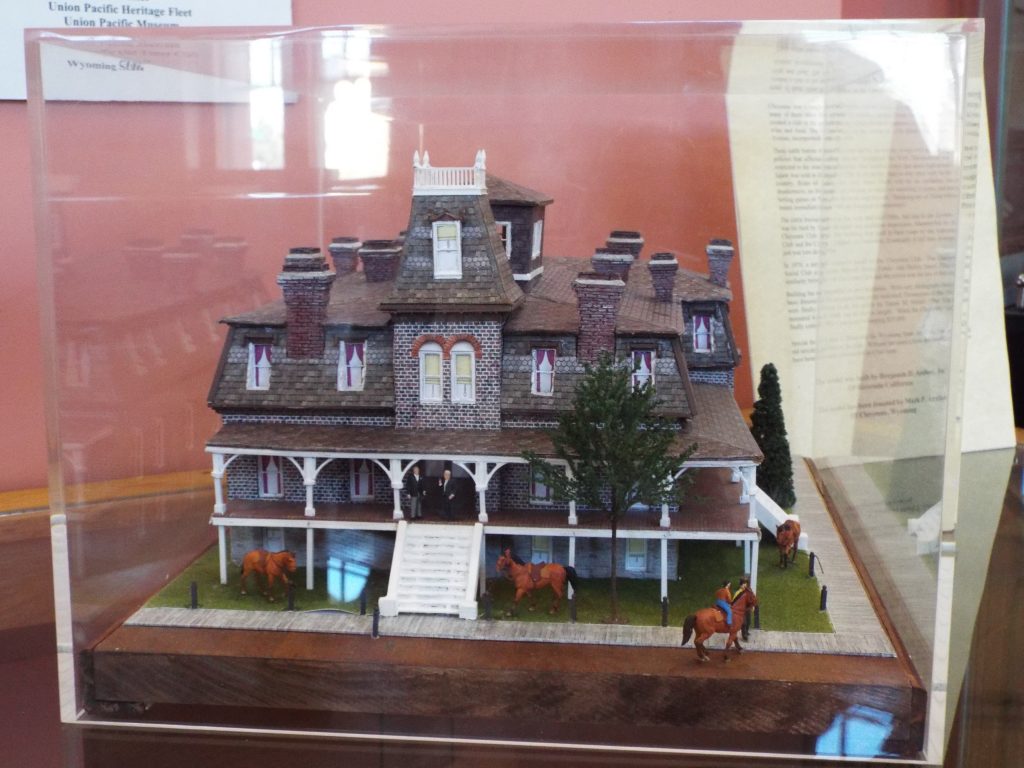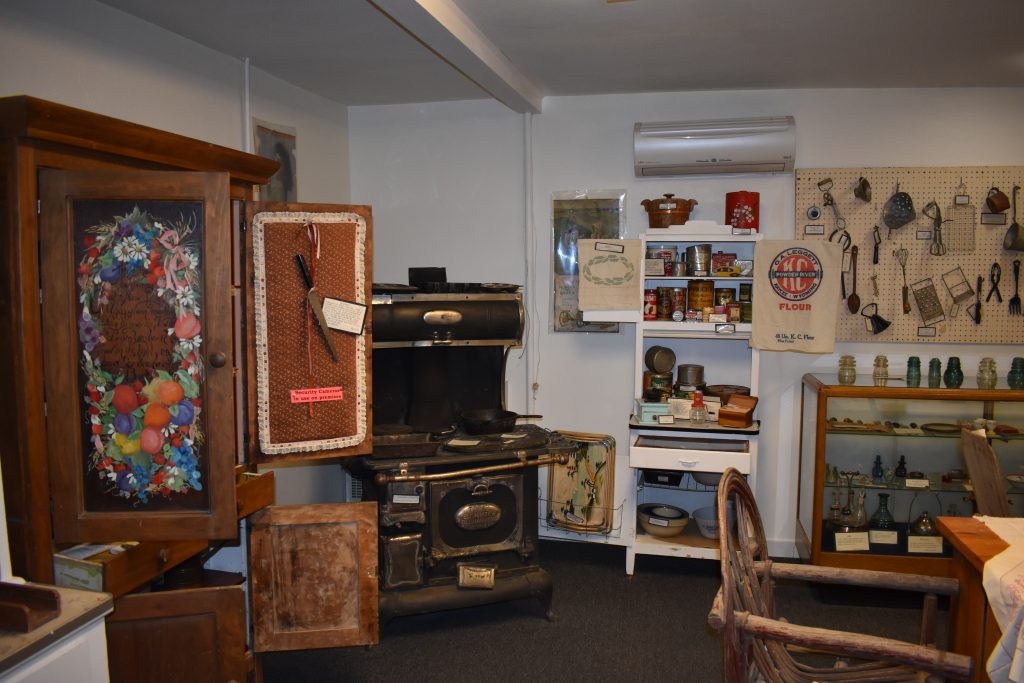News
The Johnson County War, Part One: The Causes

A Mike Thomas Sculpture in Buffalo depicting the Johnson County War
Wyoming historian T.A. Larson ranked the Johnson County War as the most notorious event in Wyoming’s history. This is a three-part story. In this installment, we will look at some of the causes of the Johnson County War.
On April 5, 1892, an army rode a secret train from Cheyenne to Casper, the end of the rails at that time. In Casper, the army switched to horses, and rode north to Buffalo and Kaycee, Wyoming. The mission, to shoot or hang 70 men who had been named as cattle rustlers by the cattle kings of Wyoming.
In a Laramie Weekly Sentinel, on April 16, 1892, it talks about the secret train, and some of the causes of the war. Wars and Rumors of Wars. On Tuesday of last week, a mysterious train was made up in Denver and run to Cheyenne where a halt was made just long enough to change engines when with all possible speed it pulled out for the north never halting till it reached Casper, the termination of the track on the northern road.
The ubiquitous newspaper reporter succeeded in discovering that this train carried some sixty or seventy-five men, well armed, together with horses and equipment, wagons, provisions, bedding etc. In short It was a well appointed army, on a small scale, starting out on a military campaign. It was said to be composed of Pinkerton thugs, Texas desperadoes, cattle barons ect., and was suppose to be organized by the stock men for an incursion into the northern counties to wage a war of extermination against the rustlers and cattle thieves.
At Casper the expedition disembarked and struck out for the north, (horseback) taking the precaution to cut the telegraph wires running to Buffalo. It is needless to say that this expedition has caused the wildest excitement all through the state. At this writing one week has elapsed since it started out from Casper and as yet only vague and conflicting rumors come to us of where it is and what it is doing.

Due to the hard winter of 1886-87, which pretty much ended the open range cattle culture in Wyoming. A drought and the killing winter put many big cattlemen such as Moreton Frewen, who lived not far from Kaycee, out of business. With the losses from the bad winter, the cattle barons wanted to keep the public range open for their cattle. They didn’t want to share the range, or have it cut up by homesteaders, or ‘nester’ fencing, which could also create a deadly trap for cattle in a winter blizzard. They felt they needed all the grass available to rebuilt their herds.
The Weekly Boomerang, Laramie, Wyoming Territory March 10, 1887, recorded this observation from the bad winter, Dying Of Starvation. …..From the junction of the road between the Big and Little Laramies to the top of the Divide on the road to the McCreary ranch within a short distance from the road, five head of dead cattle. At the junction of the Willow and Sprague fences are eight more. North of there, near a small lake, are 12 more. I think I do not over-estimate the amount when I say there are fifty head of dead cattle on or near Seven-mile and about the same amount on Four Mile. Any man could go out on the plains in some of our numerous storms and see those poor brutes ‘humped up in some angle of a wire fence, without any protection from the storm. The practice of leaving cattle, unprovided for and unprotected during our severe winters is both cruel and inhuman.
With the bad winter, and homesteaders, the cattle barons saw their way of life coming to an end. Although many of the small ranchers and homesteaders were honest, the cattle barons began branding anyone who wasn’t a large rancher a ‘rustler.’ When they felt that the law didn’t agree with them and wouldn’t bring the rustlers to justice, they began to take the law into their own hands.
Cheyenne Weekly Sun, July 25, 1889: Double Lynching: Two Notorious Characters Hanged for Cattle Stealing. Jim Averell and His Partner Ella Watson Meet Their Fate at the Hands of the Outraged Stock Growers. Special to the Sun Douglas, Wyo., July 22. –Early yesterday morning a cowboy named Buchanan reached the ranch of E. J. Healy. forty miles west of Casper and reported the lynching of Jim Averell and Ella Watson Saturday afternoon by stockmen. Averell kept a ”hog” ranch at a point where the Rawlins and Lander stage road crosses the Sweetwater. Ella Watson was a prostitute who lived with him and is the person who recently figured in dispatches as Cattle Kate, who held up a faro dealer at Bessemer and robbed him of the bank roll. Both, it is claimed, have born the reputation of being cattle rustlers and are believed to have been in league with Jack Cooper, a notorious cattle thief who died with his boots on in that vicinity a few months ago… Every attempt on the part of the stockmen to convict thieves in the courts of that county for years has failed, no matter how strong the evidence might be against them and stockmen have long threatened to take the law into their own hands. This fact, together with the further one that Averell had had more or less trouble with every stockman in that section, probably accounts for the violent death of himself and the woman Watson.
In the Laramie Weekly Sentinel on April 16, 1892, quoted above: The Cattle War Diagnosed: Of the 75,000 population of the state of Wyoming more than 50,000 are residents of the cities, employees of the railroads, coal miners and engaged in various other pursuits and are not directly engaged or interested in the stock business. Of those who are directly involved in this industry the men, leaving out the women and children, scarcely number 5,000.
Those may be divided into three classes, The cattle kings, the small ranch men and the rustlers. The cattle kings -numerically,- are the smallest class, but they have money, which is power, are well organized
And, in the past, have. been able to control legislation secure special class legislation in their own interest, control the policy of the territory, dictate the terms to the railroad company, influnce courts and run things to suit themselves generally.
The rustlers, numerically, come next. They are mostly composed of men who have been cowboys, and not a few of them have served an apprenticeship at stealing and been paid good wages for it by the stockmen themselves. It has been common among many of the cattle kings to pay their cowboys five dollars a head for all the mavericks they could get the brand of their employer upon, and thus the cattl kings preyed still more upon the small ranchmen, and at the same tlme graduated a class of thieves who have returned to plague the inventors.
The third class, probably outnumbering both of the others, are the small ranchmen. They are generally honest, at least they want and mean to be, and would be if let alone and had a chance. But their position is hardest and most trying of all. They are poor and unorganized. They are trodden under foot by the cattle barons and robbed by the rustlers. They are ground between the upper and nether mill stones. The great round up comes along twice a year and makes fearful in roads on their little herds, and protests and passion are met with jeers and defiance by the wild cowboys. The rustler follows In the wake of the round up and takes what is left. He is compelled to play good lord and good devil. Not only is his stock but his life is in danger if he sides with either party.

The article shows that the small ranchers were ‘darned if they did or darned if they didn’t’
He (the small stockman) dare not lock horns with the round up army of the kings or his whole herd will be swept away. If he peaches on the thieves or, sitting on a jury, convicts one of them, his life Is likely to pay the forfeit. What wonder if, under these trying circumstances, he throws up the sponge, abandons his little home and leaves the country, or gives up trying to be honest and joins the thieves.
“To spoil the spoiler while he may, and from the robber read his prey.”
This is, we believe, a tolerably correct diagnosis of the disease. Perhaps, in the near future we will try and prescribe for it if some of our contemporaries do not suggest a remedy. The case is desperate.

In late 1891, The employees of the Wyoming Stock Growers Association hanged a man from Newcastle, Tom Waggoner, and then descended upon the Nate Champion cabin near Kaycee. Champion was a small operator, who ran about 200 head of cattle, and grazed them on public land, insisting that his cattle had as much right to the grass as the cattle baron’s cattle did. The Cattleman’s Association didn’t agree.
The Sundance Gazette, February 12, 1892: We published last week an item in regard to the arrest of Joe Elliott, one of our former citizens, and a young man who always bore a most excellent reputation m this community, We clip the following article from the Buffalo Bulletin: “On Sunday morning. November 1. I891, four men, masked and armed, broke into the cabin of Nate Champion and Ross Gilbertson on Powder River, this county, and made an attempt to get possession of the two cowmen, the supposed purpose being to lynch them. Champion, a man of iron nerve and firm arm, drew his revolver and began firing at the intruders, who there upon beat a precipitous retreat. leaving behind them two new Winchester rifles, four overcoats, some silk handkerchiefs, a cap and a meerschaum pipe. Later on the camp of these four men was found, also abed, a bloody tarpaulin, six horses and some other articles. The Bulletin was the first paper to give the news of this attempted murder, and has since kept the public posted on the new developments of the affair.
On Sunday morning of this week Sheriff W. G. Angus left Buffalo for Newcastle, armed with warrants for the arrest of Joe Elliott, a former deputy sheriff, and Fred Coates. A business man of the latter place, charging them with having, on Nov. 1, 1891, forcibly and felonious, entered the house of Nate Champion and Ross Gilbertson, with intent to kill the said Champion and Gilbertson. Yesterday the sheriff returned with Elliott, Coates being away from home on a business trip to Kentucky. On being arranged before Justice Reimannn yesterday afternoon, Elliott plead not guilty, the case was continued to Monday next and bail placed at $1,000.
When seen by a reporter, Elliott stated that he had nothing to say except that he was innocent of the charge preferred. He was in this county about the date mentioned m the warrant, but had no knowledge or connection with the assault alleged against him. He was sure he could prove his innocence.
Coates, he said, was at home and could not have been mixed up in the affair. The state claims to have very strong evidence against the accused, but would divulge nothing until the day set for the examination.
There seems to be a very unhealthy condition of affairs in Johnson County, probably growing out of the Tisdale and Jones murder. But it is certainly not a wise way to overcome the difficulties for the prosecuting officers to proceed against persons against whom evidence cannot be produced that would justify an arrest. Mr. Coates, who it seems has also been charged and who would in all probability have been arrested at the time of Joe Elliott’s arrest if he had not been absent from home on business, can prove by a large number of witnesses that he was nowhere m the vicinity of Powder River at the time it is claimed the assault took place, While the Gazette would like to see the guilty brought to justice, still there is such a thing as persecution which sometimes is allowed to pass under the name of prosecution.
The murder referred to was of Powder River ranchers John A. Tisdale and, perhaps, Orley “Ranger” Jones, who had testified against the men who broke into Champions cabin. Unfortunately, being a witness was a death sentence.

Carbon County Journal, Rawlins December 10, 1891: Murder most Foul. A War of Extermination Inaugurated in Johnson County Tisdale and Jones, Both Alleged Rustlers, First Victims.
With sorrow not unmingled with indignation this paper is called upon to chronicle one of the most dastardly outrages that has ever disgraced the annals of the state of Wyoming— the murder of two of Johnson county’s most respected citizens. John Tisdale, residing on the Powder River, and “Ranger”Jones. A little over two years ago, says the Douglas Graphic, the big stockmen put their scheme into practice the driving out of the small ranch men, by raising a the cry of “rustler,” and if this did not work, the masked lyncher and assassin were employed by hanging an innocent man and woman on the Sweetwater.
The murderers, although well known, were never punished. A few months ago Tom Waggoner was taken out and hung. No effort was made to punish the murderers. John Tisdale is a small ranch man residing on the Powder river. He is classed by the stockmen as “rustler.” which probably means that he occasionally catches a maverick that the big stockmen think they ought to be allowed to steal.
At any rate he was a settler, had a wife and four little children, and was, of course, in the way of the would-be cattle kings. Tisdale had been to Buffalo and purchased clothing and groceries for his family, he also had a lot of Christmas toys for his little ones. On Thursday he started for home, thinking, no doubt, what a merry Christmas he would soon have with his wife and children. When about nine miles this side of Buffalo there was a crack of a rifle from a sage bush, a bullet entered Tisdale’s back, passed through his heart and body, wounded one of the horses and Tisdale fell over dead in his wagon, One of the parties suspected of the murder, Deputy US Marshall Frank Canton, has already given himself up and demanded a hearing.
The Johnson County War was a violent clash between the cattle kings and the rustlers, or suspected rustlers. It happened 130 years ago, and completely changed Johnson and Sheridan Counties.
In part two of this story we will look at the rest of the war and what effects it had on Northern Wyoming.


Fred Osborn
April 16, 2022 at 2:24 pm
Too bad for the state of Wyoming’s legacy it has been forever tainted by incessant greed and arrogance…which in some ways still prevails.
Rollie Zempel
April 16, 2022 at 3:08 pm
A very interesting story, I love history. Keep up the good work.
Ira roadifer
April 17, 2022 at 8:09 am
Enjoy the read. Thanks for keeping me posted. Will be looking forward to part two.
Nancy L. Jennings
April 18, 2022 at 8:21 am
CV-Nice article as always look forward to the next! Thanks,
dale champion
September 22, 2022 at 9:00 pm
Hi Nancy I enjoyed it also
dale champion
September 22, 2022 at 9:06 pm
Thanks for telling the story. As well as Nate’s story once again. This topic keeps coming up I appreciate the way you told it.